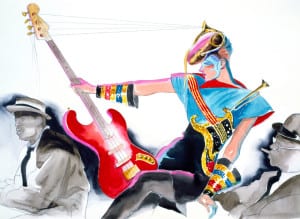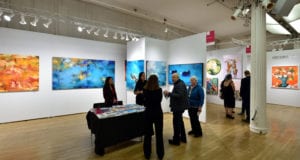Most people visit the Pierre Hotel for a bite or to check in, but what if we told you to go for the art. “ Living the Dream” features Brooklyn-based painter Jasmina Danowski recent works on paper, canvas, and panel that showcase the marriage of organic abstract form, vibrant color, and lively composition. The works can be found at the Pierre’s Two E Bar and will surely liven up any conversation over cocktails.
We caught up with Danowski to discuss her background and how she ended up at one of the most famous hotels in New York City. This interview has been edited for length and clarity.
Art Zealous: You don’t leave home without. . . ?
Jasmina Danowski: My keys
AZ: Favorite Museum?
JD: Museum of Natural History
AZ: Drink of Choice?
JD: Peppermint tea made from organically grown leaves or a glass of Pinot Noir (organically grown preferred)
AZ: Favorite hotel?
JD: The ones where you can open a window for fresh air at night.
AZ: You were born in Germany, talk to us about that experience. Have you been back? What’s the art scene like vs NYC?
JD: I have been in the US since 1987, in NYC since 1990, and yes I have been back to Germany and Europe a fair amount – although less of late as I have been focusing more on Brooklyn & NYC.
I would say the art world has become fairly international. I have been visiting fairs abroad and here in the US, on a more or less regular basis. I used to visit art Basel in Switzerland whenever I could get away from my responsibilities at home before the fair came to Miami. Now when I can, I go to Miami, but the overall experience is very different Miami versus Basel, yet what they do have in common is that you can see a lot of international galleries exhibiting and that I think is really great. I also used to subscribe to a German periodical called KUNSTFORUM, which was excellent. I always stopped in my tracks when the magazine arrived and almost religiously went sifting through the articles. The NYC art world is vast, has its darlings, and can feel overwhelming at times, but it is great to have that choice of being able to mix in, in my case just loosely, going to an opening of a friend or someone’s art I really like – or staying home working.
I have never really been part of any art scene, have remained more an observer than a participant. I like to keep a critical distance, which allows me to not fall into any group pressure of having to like or not like something. I really like to make my own path and be free of art world politics. I love doing my work and looking at what other people do and otherwise keep my independence and free spirit. I am not a networker but love a good dialogue about art.
All in all, I would say there is probably no other city I know where art is so easily accessible to people than it is here in NYC. Lately, real estate and rental prices have forced many galleries and artists to close or move. It is very different in Europe, even in large cities like Berlin though the tendency is the same, just not as extreme yet. The internet too, has had a great impact on the art world in many ways, one being the fluid interchange and access of images through media, but I do think NYC will remain a mecca for art.
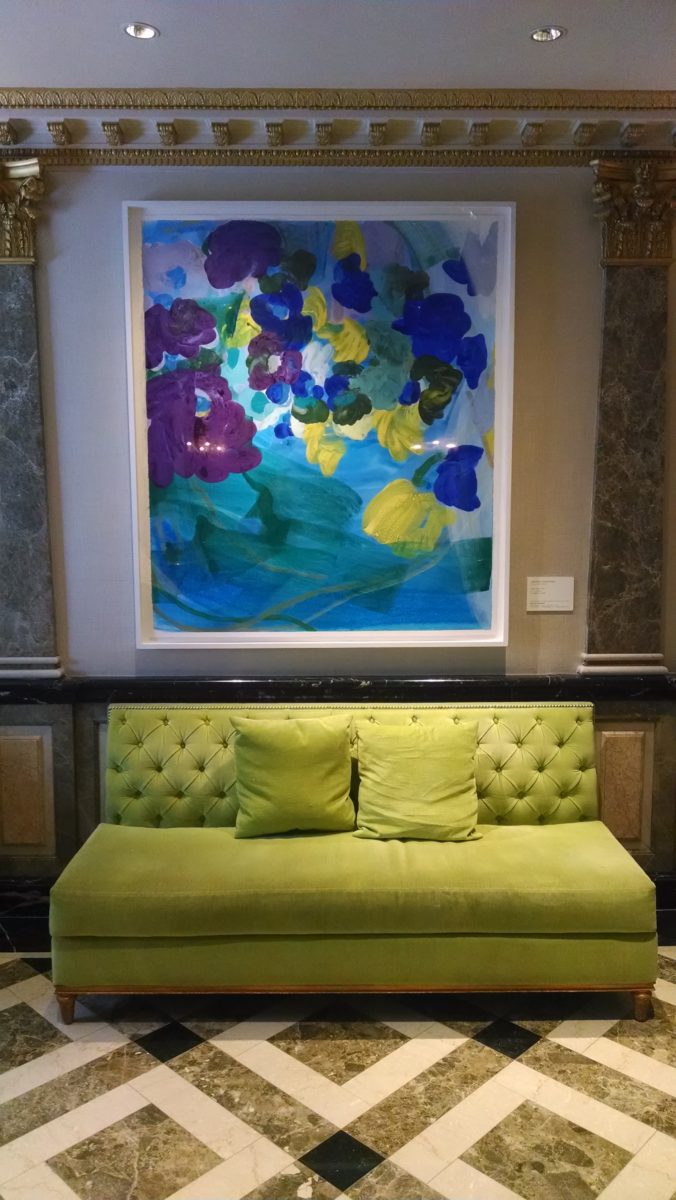
AZ: Earliest memory as a child and your exposure to the arts?
JD: I grew up with art around me. We had a lot of art books illustrating the great masters of the Renaissance and my grandfather was a passionate hobby painter, so art always had a presence in my life. I also loved drawing from very early on, but always thought that it was strange that the people in my works never looked like real people. I mainly drew horses, deer, birds, rabbits, squirrels and plants and I became really good at that. Kids from my neighborhood would bring me their school assignments. I loved doing it!
AZ: We hear you are moving studios, what is your ideal studio setup?
JD: I was trying to make a move, but it didn’t work out. My setup now is very good. I live close by and can walk to my studio. It would be great to have a sink and private bathroom in my space, also a place where I could potentially spend the night, which is not allowed here and makes it more like going to the office or something like it instead of really living with my work. On the other hand, it also is refreshing coming home and enjoying some physical distance from my doings in the studio. I have had various studio/home scenarios, and it has almost been like participating in different residencies.
I do still dare to dream about a modernized studio barn, but I am not so sure whether it would work for me. I don’t like the idea of living out in the country somewhere, having to possibly get in the car to get a carton of milk. I do feel fairly content with my current setup, except it is way too expensive. At one point I would like to get home and studio back together. It just feels easier to stay in my mindset that way, and I can get a lot done while staying in a flow.
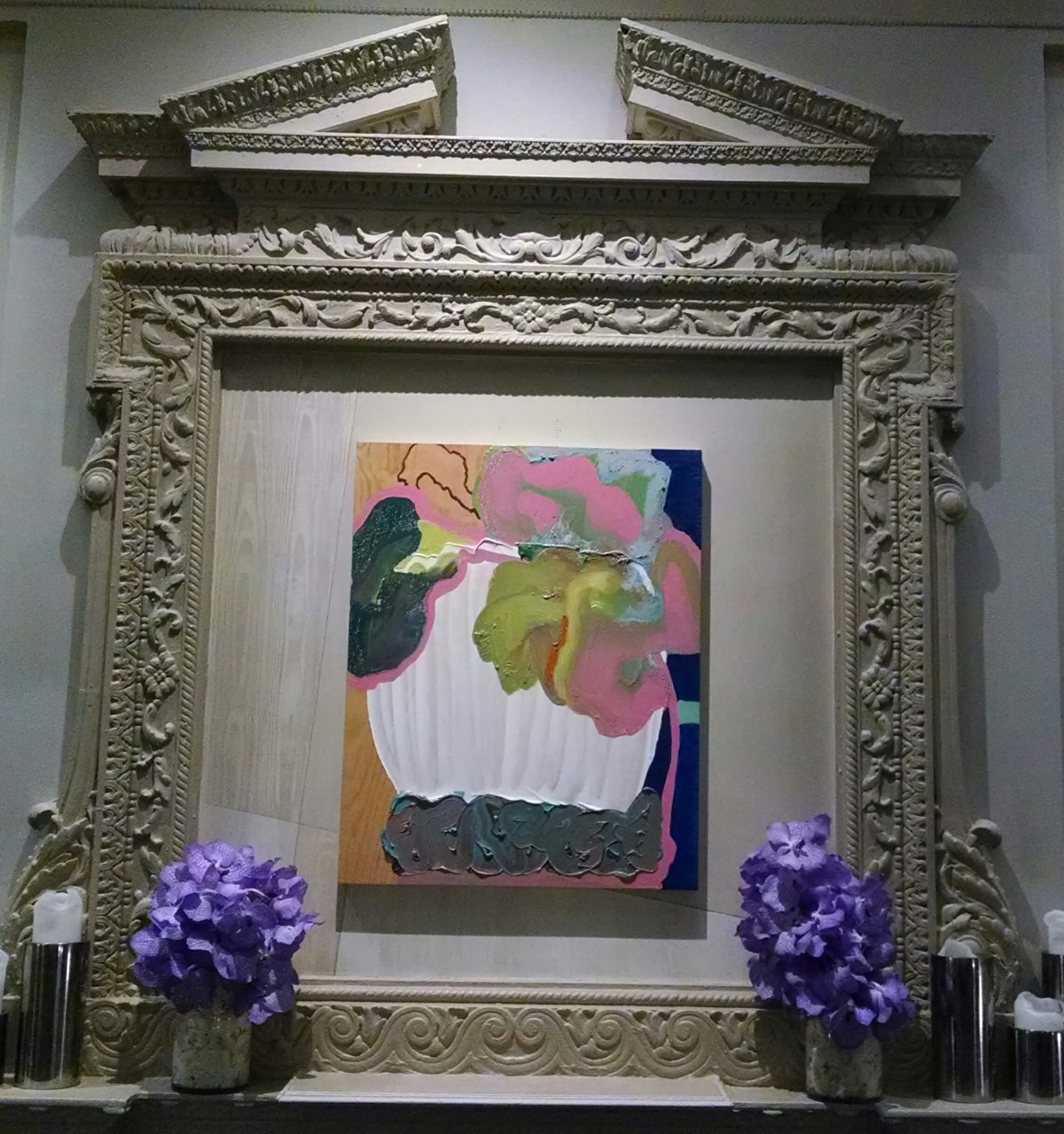
AZ: When is your favorite time to make art?
JD: That actually does vary. I do develop rhythms which then end up rotating and eventually changing. I do have some routines, but it is more like a two- or three-factor chronology of elements, meaning if I do one thing within my factors of preferred things to do, I usually let it follow with a semi-established attached chronology of a second and third, which has already proven over time to be enhancing. The pool I draw from itself is rather small but rich enough to keep me going and entertained during the course of my day. I am a big believer in making everyday life a priority. I do not live for trips or getaways; that is not my style.
During intense working periods, I noticed that I tend to work more toward the later hours into the mornings, sometimes leaving my studio around 3 a.m. or even later to go home. When I had a home studio, I would get up in the middle of the night and do something while it was fresh on my mind. In this studio here now, it is merely the after office hours and weekends when the building is empty. I don’t believe in tight regiments for very long. I find them too stressful and draining and not conducive to positive thinking and letting ideas evolve.
AZ: You currently are exhibiting at the Pierre Hotel, how did this partnership come to fruition?
JD: The management at the hotel decided to reintroduce the idea of making the cultural life of the city part of their programming. My gallery used to be on 58th street between Madison and Park, a heavily trafficked block that exposed my work to hundreds of people every day since it was on the ground floor with great windows. The responses at the time were like a tidal wave. The manager and other people involved with the Pierre’s rotating exhibition program knew about my work from that time. They contacted me, we met, and once I saw the space, I instantly loved the idea and got to work. I love “off the beaten track” projects. I had done a previous one in collaboration with the Church of the Heavenly Rest on Fifth Avenue, where we installed an Altar Triptych. The Pierre with its Two E Lounge really is an exceptional place and a fantastic exhibition space. The chemistry with the room and with the friendly team at the Pierre was just right!
I had a few works that were already far along and suitable for the lounge. The art deco inspired interior with its dominating architectural design felt challenging and exciting. Once I started working my dialogue was in direct communication with the location. The work was my response to the lounge.
They invited me back in 2018, and this time my focus was not only the architecture since I was already more familiar with the room. I also really wanted to show a diverse vocabulary with different approaches and variety in brush strokes and color.
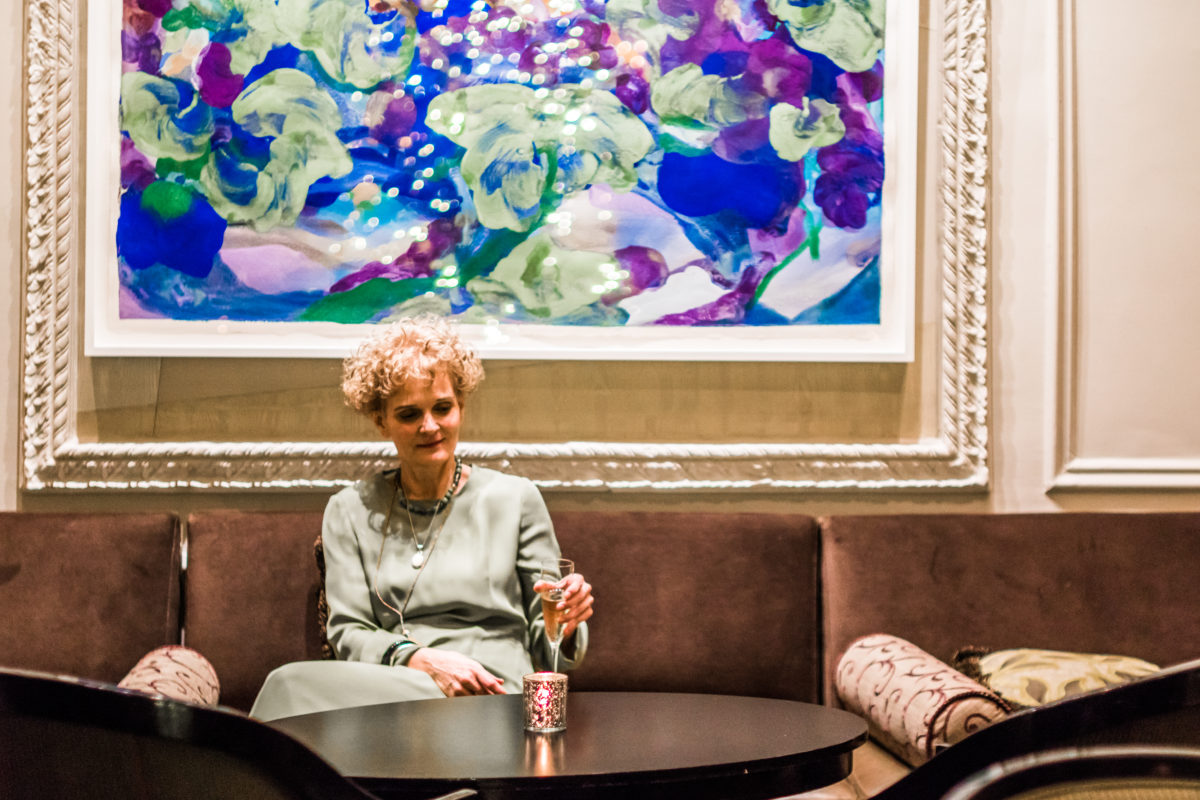
AZ: Artists are going down other avenues to showcase their work, like hotels, what was it that drew you to exhibiting at a hotel?
JD: In that exhibition, I specifically focused on variety—a rare freedom an artist is allowed. Most curators and dealers have tightly orchestrated programs, but most artists have their own programs. So having the Two E lounge for myself was a real chance to exhibit a spectrum of work. This was a rare chance to show more of what I had been working on over the years and Hollis Taggart was so generous to support this project with his gallery.
It was also a great chance to bring my art to where people are. Most people who come to The Pierre do not go there to see art, but the ones who do see the art are happily surprised. I have been hearing back from people who follow me that they have been enjoying being able to see the work again in midtown. That means a lot to me!
With galleries closing because rents are becoming impossible, hotels are great alternative spaces for artists to energize, transform, or bring people to. It was a wonderful challenge to paint with and against the architecture of the room while exploring my interests as a painter.
AZ: What are your current inspirations/reference points?
JD: One is working on a new set of oil on canvases. I would like to revisit some of my previously explored language. The other is that I would like to take on architectural projects where I am in direct contact with a concrete space. I am contemplating some new projects with architectural glass and mosaic, which has been on my mind for a while.

AZ: You make work in different media (paintings, works on paper, etc.). Do you have a favorite?
JD: The success of my works on paper has been putting my other works a bit into the background, but I have always continued to develop these as well. I have a long history of making my own paint and love mining the possibilities of that language. I like keeping everything at play because one feeds into the other, enhances and develops often at unforeseeable rates. I have learned to trust my inner guide by spending many years of testing the language, starting out not trusting superimposed interpretations, wanting to know what it all could mean for me and wanting to know if paint could actually “say” anything.
AZ: What is it that draws you personally to painting?
JD: I was always able to lose myself in painting/drawing, forgetting about time, while mobilizing energies that otherwise would lay unused. Even as a kid or young adult, I was able to focus for very long stretches. It is a place for me where an exchange of energies can happen without having to use words. It makes me feel alive and in communication with the world while contemplating and thinking about the painting. I like making my own decisions, being honest and direct without having to explain or argue about it or having to act in a compromised way directed by outside forces. By the time I release a painting I have done my utmost best for it on all levels. I still love the sheer process of it and some of the resulting exhaustion that come from it, especially if the painting has reached a new level for me. The question of how one can push and grow has to be authentic for me and is continuously pressing. There are still many ideas I have a desire to try.
AZ: What projects do you have coming up?
JD: I am excited to be part of two group exhibitions planned for the first half of 2019. One at an upstate College, the other at a gallery in Chelsea. I have plans to venture into explorations within the architectural area, as I mentioned earlier. Plus, I hope to be able to exhibit a group of paintings I did for an exhibition in New Mexico that did not end up taking place. I also really have been wanting to go back to work with clay for some years, and maybe this year will be the year? I hope so!
top image // Igor Korenfeld from HvA Design


